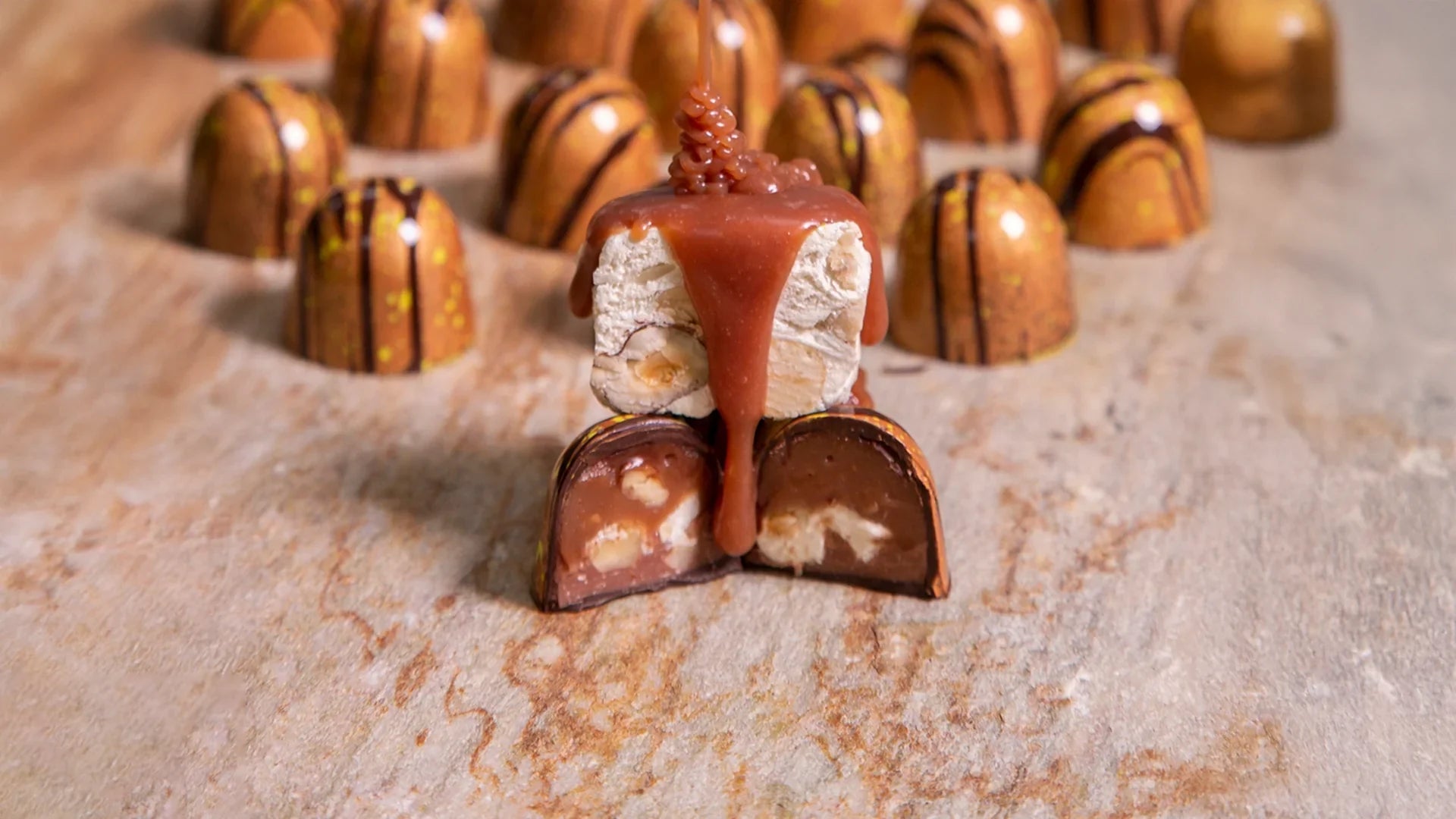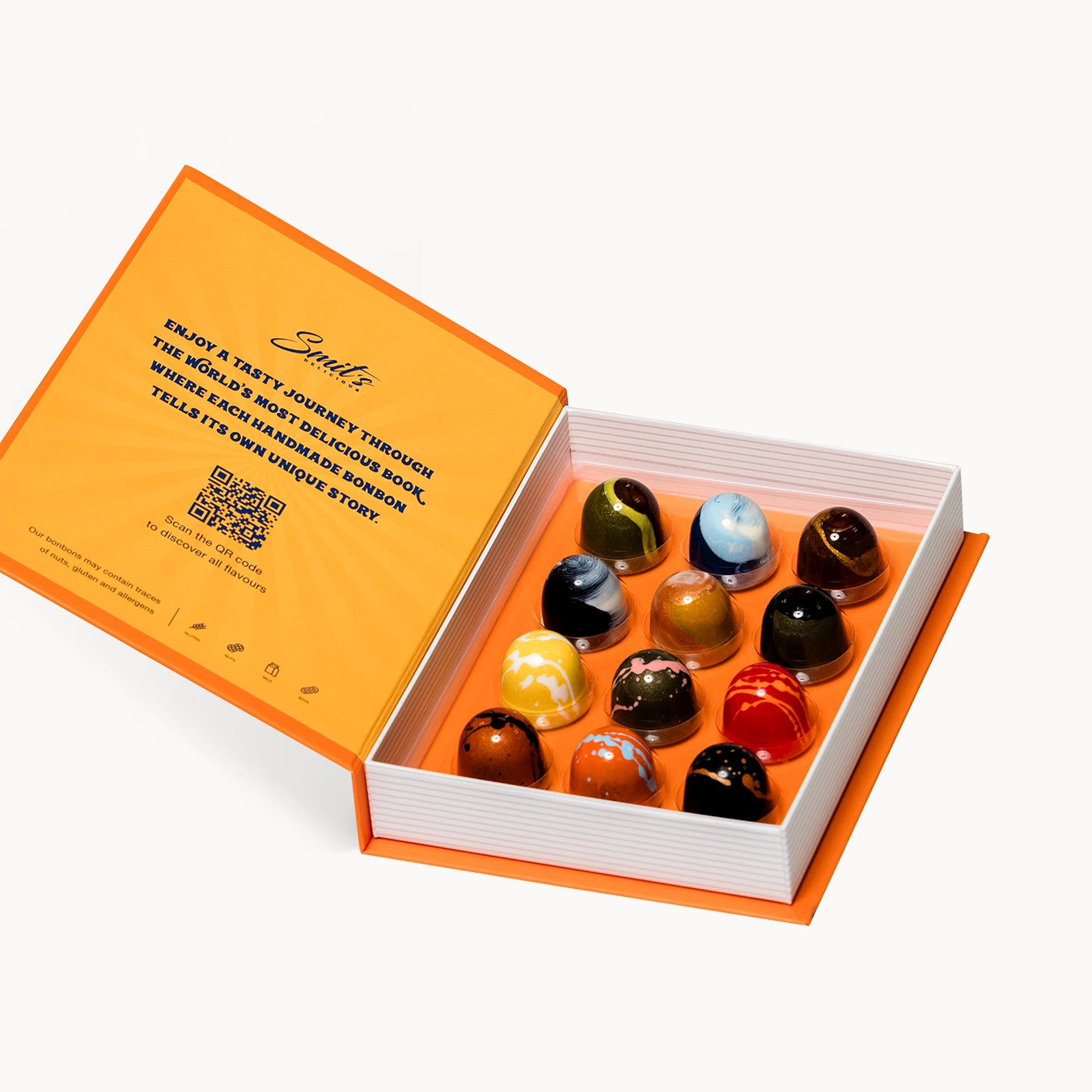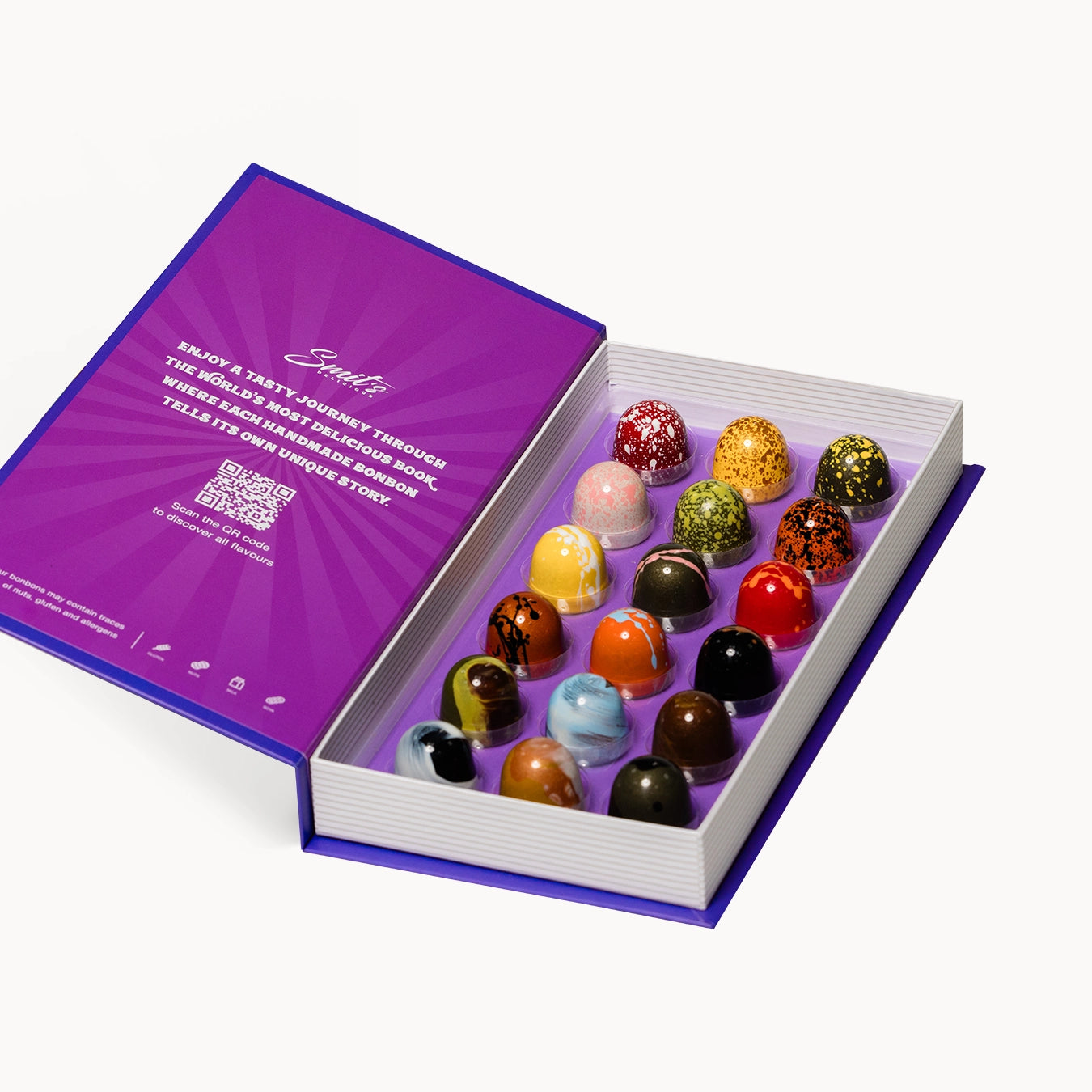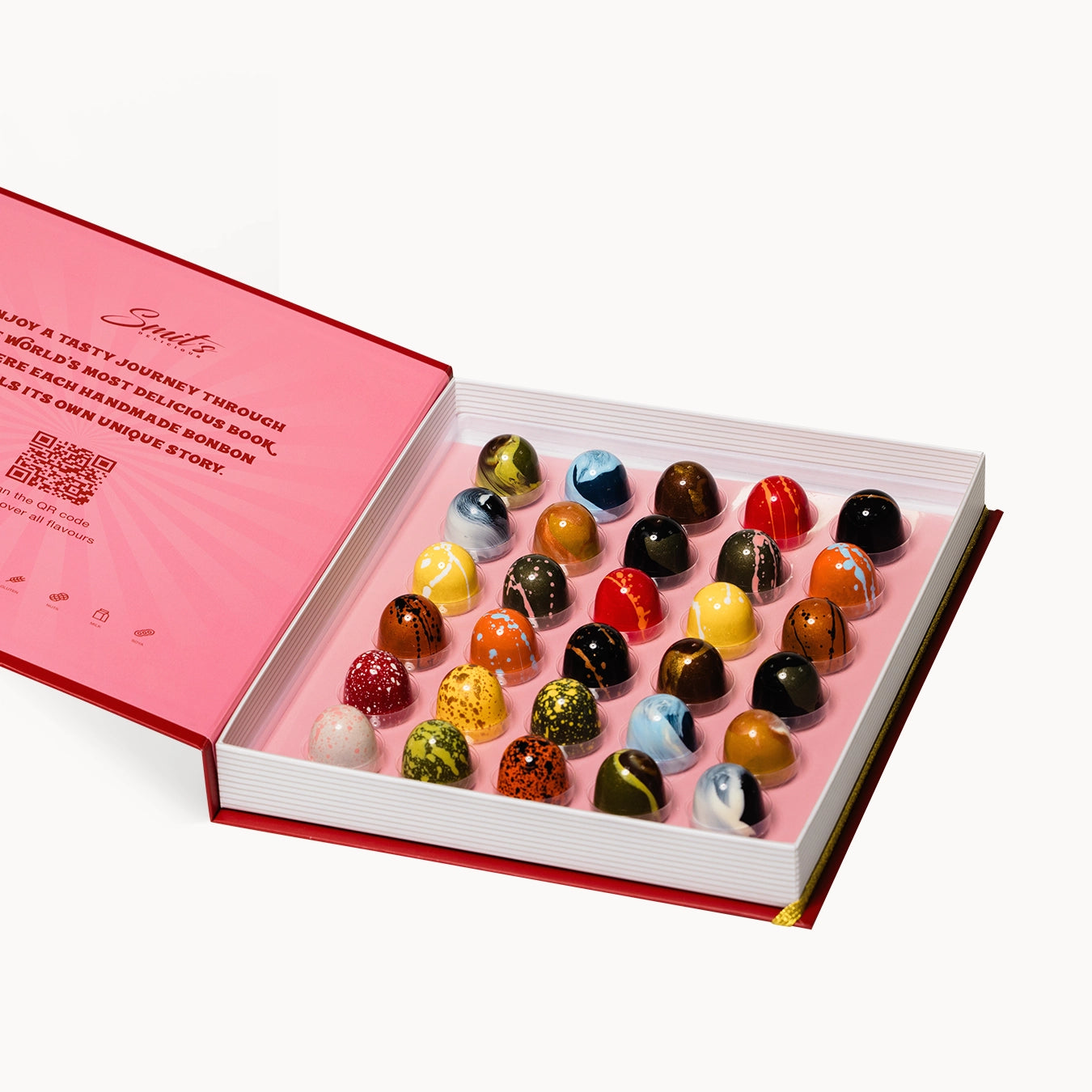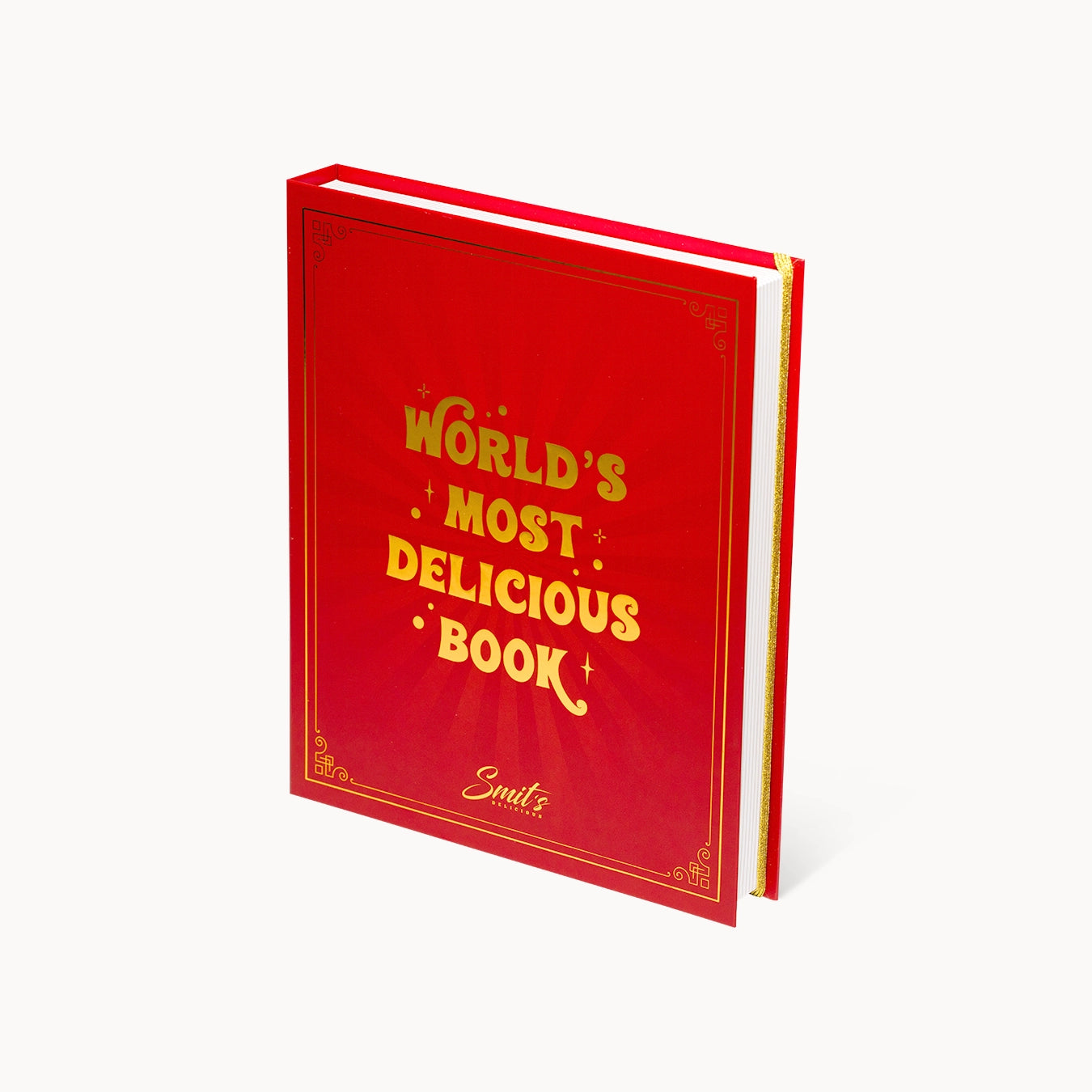Bonbons are small, chocolate-covered treats often filled with a delicious filling. They are prized worldwide as luxury confectionery and symbolize refinement and craftsmanship. But what truly makes a bonbon a bonbon? And how does it differ from other chocolate specialties like pralines? In this blog post, we delve into the world of bonbons: their history, varieties, production, and the art of enjoyment.
The history of the bonbon
The word "bonbon" comes from French and literally means "tasty, delicious" (derived from "bon", meaning "good"). Its origins date back to the 17th century at the French court of King Louis XIV. It was here that the first bonbons were created: small candies dipped in sugar and later coated with chocolate.
With the rise of chocolate as a luxury product in Europe, confectioners and chocolatiers began experimenting with fillings. This led to the creation of the modern bonbon: a thin chocolate shell with a soft, liquid, or firm filling.
Want to learn more about how chocolates originated and how they've evolved over the years? Then read our blog about the history of chocolates.
What makes a bonbon a bonbon?
A bonbon is a chocolate-covered treat that can be filled with a variety of flavors and textures. The core of a bonbon consists of a filling coated with dark, milk, or white chocolate. This distinguishes bonbons from, for example, truffles, which are often dusted with cocoa and have a softer texture.
Characteristics of a bonbon:
- A thin chocolate shell
- A surprising filling (ganache, praline, marzipan, caramel, liqueur, fruit puree, etc.)
- A handmade or cast mold
- A refined taste experience
Types of chocolates
Bonbons come in many varieties, depending on the filling and the way they're made. Some popular varieties include praline bonbons with a caramelized nut filling, velvety-smooth ganache bonbons with various flavors like coffee or raspberry, caramel bonbons with a creamy, sometimes salted filling, fruit bonbons with a fresh fruit purée, marzipan bonbons for almond lovers, and liqueur bonbons with a surprising liquid center of spirits.
Want to learn more about the different types of bonbons and their flavors? Then read our blog about the different types of bonbons and discover which one suits your taste best!
How are chocolates made?
Making bonbons is an art that requires precision and craftsmanship. Chocolatiers melt and temper the chocolate to achieve a beautiful sheen and crisp texture. Then they prepare the filling, which can range from creamy ganache to firm praline, and fill the bonbons by pouring them into molds or by hand-dipping them in melted chocolate. Finally, the bonbons are decorated with nuts, cocoa powder, or edible gold leaf and carefully packaged for a luxurious look.
Want to learn more about how chocolates are made? Then read our blog about making chocolates !
What is the difference between chocolates and pralines?
Bonbons and pralines are often confused, but there's an important difference: a bonbon is a general term for a thin chocolate shell with a surprising filling, such as ganache, caramel, or fruit puree. A praline, on the other hand, usually refers to a bonbon filled with praline paste, a mixture of caramelized nuts and chocolate. In Belgium, the word "praline" is used for all filled chocolates, while in the Netherlands and France, "bonbon" is the common term.
Want to know more about the precise differences? Then read our blog about the differences between chocolates and pralines !
What makes a bonbon really special?
Bonbons are much more than just chocolate: they're an art form, a luxury, and a moment of pure pleasure. Whether you love creamy ganache, crunchy praline, or sweet caramel, there's a bonbon to suit you.
Curious about unique chocolates? Discover the unique flavors of our handmade chocolates at Bonbonbook !

